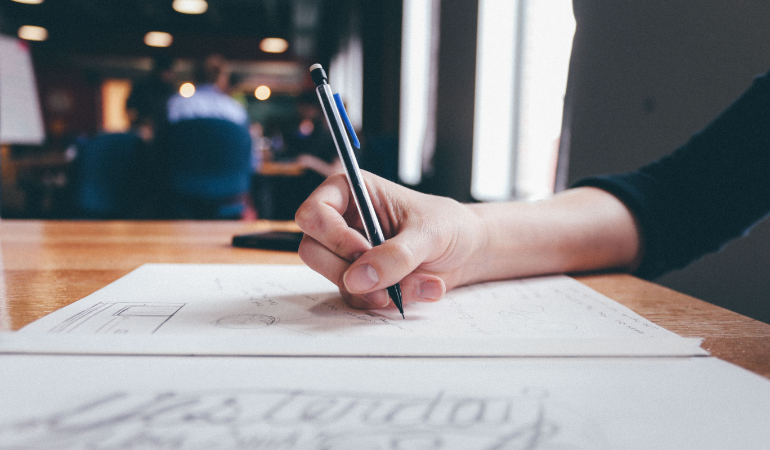Meditation isn’t a new concept. People have been meditating since the beginning of time in an attempt to slow down and train their minds. Since then, the popularity of meditation has grown exponentially. Now approximately 400-500 million people practice meditation on a regular basis. There is no doubt that meditation offers some emotional and health benefits, and that’s why I wanted to offer you some of my favorite mindfulness techniques.
Mindfulness Yoga is a type of meditation where you’re intensely aware of the things you’re feeling at that moment. By using a variety of techniques, you become “mindful” of your body, your emotions, and your surroundings. This can be used to ground you to the moment, which will benefit your personal life. But, if you apply it to your business, you’ll be able to grow and shape it like never before.
However, becoming mindful takes some practice, especially if you’re not used to meditating. So, here is a list of mindfulness techniques to help you get started.
Pay Attention to Your Surroundings
We often get so busy that we don’t notice things in our immediate surroundings; causing stress, lost opportunities, or even putting us in danger. We have to slow down and learn how to see our world through every sense we have: sight, taste, smell, touch, and hearing. The more we practice paying attention, the easier it will be to notice things when we become busy. Essentially, this can help us feel more in control.
Live Life in the Moment
Cliche, I know, but it’s true. Looking at the past can cause stress and depression, and looking to the future may cause anxiety. Living in the moment takes the pressure off us and gives us the freedom to enjoy life as it is without judgment or fear. Plus, we’ll be more open to finding joy in the little things- like a pair of leaves dancing in the autumn breeze; a simple pleasure that we can only experience if we live in the moment.
Accept Yourself as You Are
For some of us, this will be the worst part of learning mindfulness. We’re so used to scrutinizing every mistake, every flaw, that it’s hard to accept ourselves without some form of judgment. However, mindfulness also helps us understand our inner world, and it can teach us to love ourselves without reservation. In the meantime, you can practice acceptance by treating yourself like you’d treat a good friend or partner. Give yourself some slack when you make mistakes, praise yourself for your accomplishments, and treat yourself as you’d want others to treat you.
Practice Focusing on Your Breathing
Like with meditation, your breathing plays a big part in being mindful and can help when you’re feeling down or out of control. When that happens, find a safe place to sit down, close your eyes, and focus on your breath as it enters and exits your body. Doing this exercise for a minute or more can help you regain control of your emotions, clear your mind, and reduce your stress.
Practice Walking Meditation
While the examples above are more quick-and-dirty techniques to help you practice mindfulness on the fly, walking meditation is more structured and takes time and concentration. To begin, find a space that’s 10-20 feet long and as quiet as possible. It can be a hallway, conference room, or a stretch of the sidewalk – whichever you prefer. Start walking in one direction and take note of the sensations as you go. Your feet hitting the floor, the subtle airflow on your skin, how your body shifts to keep balance, and the rhythm of your breathing. If any disruptive thoughts or emotions try to intrude, take note of them, push them away, and continue focusing on your body. When you get to the end of your path, turn and repeat as many times as needed. Not only will this exercise increase your awareness and calm your mind, but it will also give your body the boost of energy you need to get through the day.
When to Practice Mindfulness
In the beginning, you’ll want to practice these mindfulness techniques every day for about six months. You can do the smaller techniques anywhere at any time, but you’ll want to set aside some dedicated time if you plan to practice something more in-depth, like walking meditation. Once the six months are up, being mindful should come naturally to you, and you will start to see the effects manifest in your daily life.
Now that you have an idea of how to practice mindfulness, I want to give you some examples of why you should apply mindfulness meditation to your workplace or business. Mindfulness meditation can help us:
- Increase our productivity
- Reduce our anxiety
- Enhance our creativity
- Help our emotional resilience
- Improves our communication
- Promotes better sleep
- Helps improve our focus
- Aiding with pain and high blood pressure
In other words, practicing mindfulness can make us better entrepreneurs because we’re more apt to feel confident about our decisions, empathize with our clients and employees, and be able to focus on the things that matter most. And, as we grow as entrepreneurs and leaders, so will our business grow.
When we practice mindfulness, we can’t lose.

